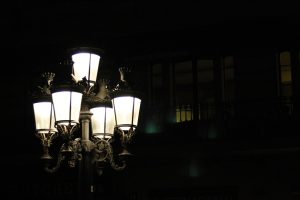Enhance Your Space with a Stylish Furniture Pendant Light
Furniture pendant lights 4lightings are suspended lighting fixtures that combine functionality with aesthetic appeal. These versatile lights come in diverse styles, shapes, and sizes, making them suitable for various rooms and decor preferences. Pendant lights can serve as focal points in living spaces, create ambiance in bedrooms, or provide task lighting for kitchen islands.
Their dual capability of offering both ambient and focused illumination makes them popular among homeowners and interior designers. Beyond their practical use, pendant lights contribute significantly to a room’s overall design. They are available in a wide range of styles, from contemporary to rustic and industrial, catering to different tastes.
Pendant lights can be installed as single statement pieces or in clusters, offering flexibility in design and lighting arrangements. This article will delve into various aspects of furniture pendant lights, including selection criteria, installation methods, creative applications in different rooms, maintenance guidelines, and tips for coordinating them with existing furniture and decor.
Choosing the Right Pendant Light for Your Space
Defining the Purpose of the Light
The primary consideration is the light’s intended use. Are you seeking ambient lighting for a spacious living room or task lighting for a specific area, such as a kitchen island or dining table?
Style and Aesthetic
The intended use will guide your decision on the size, shape, and brightness level required. Additionally, the pendant light’s style and how it complements your existing decor are crucial. If your space boasts a modern and minimalist aesthetic, a sleek and simple pendant light with clean lines may be the ideal choice.
Material and Visual Interest
On the other hand, if your style is more eclectic or bohemian, you might opt for a pendant light with unique details or a bold pop of color. The material of the pendant light is also vital, with options ranging from glass and metal to natural materials like rattan or wood. Ultimately, the goal is to choose a pendant light that not only serves its purpose but also adds visual interest and enhances the overall design of the room.
How to Install a Furniture Pendant Light
Installing a furniture pendant light may seem like a daunting task, but with the right tools and know-how, it can be a relatively straightforward process. The first step is to determine the placement of the pendant light. Whether you’re installing a single pendant or a cluster of lights, it’s important to consider the height at which the light will hang as well as its distance from other objects in the room.
Once you’ve determined the placement, you’ll need to locate a power source for the light. In some cases, this may involve hiring an electrician to install a new electrical box or reconfigure existing wiring. Next, you’ll need to assemble the pendant light according to the manufacturer’s instructions.
This may involve attaching the canopy and wiring components, as well as securing the light fixture itself. Once the light is assembled, it’s time to hang it in place. This may require the assistance of another person to hold the light while you make any necessary electrical connections.
Finally, once the light is securely in place, you can adjust its height and make any final tweaks to ensure that it is level and properly positioned. It’s important to follow all safety guidelines and local building codes when installing a pendant light, and if you’re unsure about any aspect of the installation process, it’s best to consult with a professional.
Creative Ways to Use Pendant Lights in Different Rooms
Pendant lights are incredibly versatile and can be used in a variety of creative ways in different rooms throughout your home. In the kitchen, pendant lights are commonly used to illuminate islands or peninsulas, providing both task lighting for food prep and a stylish focal point for the room. In the dining room, a cluster of pendant lights can create an intimate and inviting atmosphere above the table, while also serving as a decorative element.
In the living room, a large statement pendant light can add drama and visual interest to the space, while smaller pendants can be used to create cozy reading nooks or accentuate specific areas of the room. In bedrooms, pendant lights can be used as an alternative to traditional bedside lamps, freeing up valuable nightstand space and adding a modern touch to the room. In home offices or workspaces, pendant lights can provide focused task lighting while also contributing to the overall design scheme of the room.
Additionally, pendant lights can be used in unexpected ways, such as in bathrooms, entryways, or even outdoor spaces like patios or porches. By thinking outside the box and considering unconventional placements for pendant lights, you can add personality and functionality to every area of your home.
Maintenance and Care for Furniture Pendant Lights
Once you’ve installed your furniture pendant lights, it’s important to properly maintain and care for them to ensure that they continue to look and function their best. Regular cleaning is essential for keeping pendant lights free of dust, dirt, and grime that can accumulate over time. Depending on the material of your pendant light, you may need to use different cleaning methods – for example, glass shades can be cleaned with a glass cleaner and soft cloth, while metal fixtures may require gentle dusting or polishing.
In addition to cleaning, it’s important to periodically check the electrical components of your pendant lights to ensure that everything is in good working order. This includes inspecting the wiring, sockets, and bulbs for any signs of wear or damage. If you notice any issues with the electrical components of your pendant lights, it’s important to address them promptly to prevent potential safety hazards.
Finally, if your pendant lights have adjustable components such as cords or chains, it’s important to periodically check and adjust them as needed to maintain proper balance and positioning. By taking these simple maintenance steps, you can ensure that your furniture pendant lights remain beautiful and functional for years to come.
Styling Tips for Pairing Pendant Lights with Other Furniture
Considering Other Lighting Sources
In addition to considering other lighting sources, it’s important to think about how pendant lights will interact with other furniture pieces in the room. For example, in a dining room with a large table, it’s important to choose pendant lights that are proportionate in size and scale to the table below. In a living room with low-slung furniture, consider hanging pendant lights at varying heights to create visual interest and balance within the space.
Coordinating with Furniture Pieces
When pairing pendant lights with other furniture pieces such as sofas, chairs, and tables, consider how their shapes, materials, and finishes work together. For example, if you have a sleek and modern sofa, consider pairing it with pendant lights featuring clean lines and metallic finishes for a cohesive look. On the other hand, if your furniture has more organic or rustic elements, consider pendant lights made from natural materials like wood or woven fibers to create a harmonious design scheme.
Creating Visual Harmony
By carefully selecting pendant lights that complement other furniture and decor elements, you can create a visually appealing and cohesive interior design scheme. Remember to consider the size, scale, shape, material, and finish of both the pendant lights and the surrounding furniture to create a harmonious and balanced space.
Elevating Your Space with Furniture Pendant Lights
In conclusion, furniture pendant lights are a versatile and stylish lighting option that can elevate any space in your home. By carefully considering factors such as functionality, style, placement, maintenance, and pairing with other furniture pieces, you can make informed decisions about incorporating pendant lights into your interior design scheme. Whether you’re looking to create a cozy atmosphere in your bedroom, add drama to your living room, or enhance functionality in your kitchen or workspace, there are endless possibilities for using pendant lights in creative and impactful ways.
With their ability to provide both ambient and task lighting while also serving as decorative elements, pendant lights have become an essential component of modern interior design. By following the tips and guidelines outlined in this article, you can confidently select, install, maintain, and style furniture pendant lights in a way that enhances the beauty and functionality of your home. Whether you opt for a single statement pendant or a cluster of lights throughout your home, incorporating furniture pendant lights is sure to make a lasting impression on both guests and residents alike.

